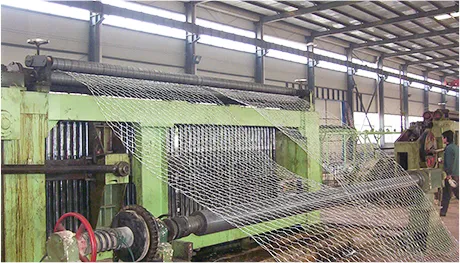-
 Phone:
Phone: -
 Email:
Email:

Rockfall Risk Assessment and Mitigation Strategies for Safe Outdoor Activities
Rockfall Networks Understanding the Mechanisms and Mitigation Strategies
Rockfalls are one of the most frequent and potentially hazardous geological hazards occurring in mountainous terrains and cliffs. As natural processes continuously reshape the Earth's surface, understanding rockfall phenomena and developing effective mitigation strategies is crucial for protecting lives, infrastructure, and the environment. This article delves into the mechanisms of rockfall incidents, their impacts, and various approaches to manage and prevent these occurrences—commonly referred to as rockfall networks.
Mechanisms of Rockfall
Rockfalls can be triggered by a variety of factors, including weather conditions, geological structures, and human activities. The primary mechanisms behind rockfalls involve the dislodgment of rocks from a slope or cliff, usually caused by the following elements
1. Weathering and Erosion Natural weathering processes, including freeze-thaw cycles, rain, and wind erosion, can weaken the rock structure. Over time, small fractures develop, allowing larger pieces of rock to break away.
2. Seismic Activity Earthquakes can destabilize previously secure rock formations, leading to sudden rockfalls. This risk is particularly high in tectonically active regions.
3. Human Influence Construction activities, mining, or even road expansion can disturb the natural vegetation and rock stability, making areas more susceptible to rockfall events.
4. Vegetation Removal Trees and shrubs help to stabilize soil and rock. When vegetation is removed—whether deliberately for development or accidentally through landslides—it increases the likelihood of rockfalls.
Impacts of Rockfalls
The consequences of rockfalls can be severe, leading to loss of life, injuries, and significant economic costs. They can damage infrastructure such as roads, buildings, and railways, disrupt transportation networks, and lead to long-term closures of critical routes. Beyond human impacts, rockfalls alter ecosystems, affecting habitats and sediment transport. These natural events can also increase soil instability, which might trigger secondary landslides.
rockfall net

Rockfall Networks and Mitigation Strategies
One of the effective ways to manage the risk of rockfalls is through the establishment of rockfall networks. These networks involve the integration of monitoring, assessment, and mitigation strategies. Here are key components of rockfall networks
1. Monitoring Systems Technology plays a pivotal role in identifying potential rockfall hazards. Monitoring systems, including ground-based radar, drones, and satellite imagery, provide real-time data on rock movement and slope stability. This information allows for early warning and rapid response to imminent rockfall events.
2. Risk Assessment Comprehensive geological surveys and statistical analyses are essential for understanding rockfall frequency and risk in specific areas. By employing geographic information systems (GIS), researchers can map identified hazards and assess their potential impacts on human settlements and infrastructure.
3. Preventive Measures Implementing rockfall barriers, catch nets, and drainage systems can significantly reduce the impact of falling rocks. Additionally, replanting vegetation helps stabilize slopes, while controlled blasting can help manage larger rockfall risks.
4. Community Engagement Raising awareness within communities at risk of rockfalls is vital. Educational programs and drills can prepare residents for rockfall scenarios, ensuring they understand evacuation procedures and how to respond effectively in an emergency.
5. Policy and Planning Land-use planning that considers geological risks can mitigate potential hazards. Building codes and regulations should require specific safety measures in high-risk areas to prevent devastating impacts.
Conclusion
Rockfalls pose significant risks to both people and infrastructure, particularly in mountainous regions. By enhancing our understanding of the mechanisms behind rockfalls and implementing robust mitigation strategies through rockfall networks, we can reduce their impact and protect communities at risk. Ongoing research and technological advancements will continue to play a crucial role in developing more effective monitoring and response systems, ultimately safeguarding lives and the environment.
-
Wire Mesh for Every Need: A Practical SolutionNewsJul.25,2025
-
Steel Fences: Durable, Secure, and Stylish OptionsNewsJul.25,2025
-
Roll Top Fencing: A Smart Solution for Safety and SecurityNewsJul.25,2025
-
Cattle Farm Fencing Solutions for Maximum SecurityNewsJul.25,2025
-
Affordable Iron Binding Wire SolutionsNewsJul.25,2025
-
Affordable Galvanized Wire SolutionsNewsJul.25,2025
-
Wire Hanger Recycling IdeasNewsJul.25,2025








